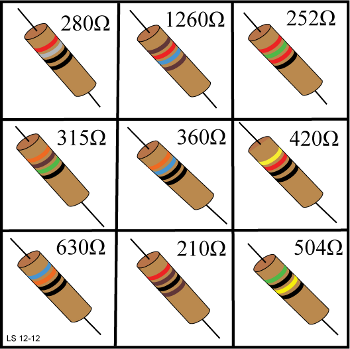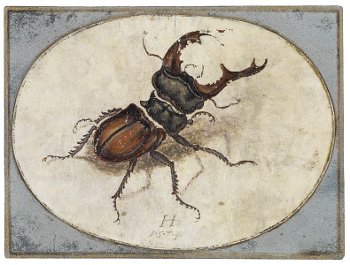
A “coffin,” or killer problem, from the oral entrance exams to the math department of Moscow State University:
Construct (with ruler and compass) a square given one point from each side.

A “coffin,” or killer problem, from the oral entrance exams to the math department of Moscow State University:
Construct (with ruler and compass) a square given one point from each side.
You’re about to play a game. A single person enters a room and two dice are rolled. If the result is double sixes, he is shot. Otherwise he leaves the room and nine new players enter. Again the dice are rolled, and if the result is double sixes, all nine are shot. If not, they leave and 90 new players enter.
And so on, the number of players increasing tenfold with each round. The game continues until double sixes are rolled and a group is executed, which is certain to happen eventually. The room is infinitely large, and there’s an infinite supply of players.
If you’re selected to enter the room, how worried should you be? Not particularly: Your chance of dying is only 1 in 36.
Later your mother learns that you entered the room. How worried should she be? Extremely: About 90 percent of the people who played this game were shot.
What does your mother know that you don’t? Or vice versa?
(Paul Bartha and Christopher Hitchcock, “The Shooting Room Paradox and Conditionalizing on Measurably Challenged Sets,” Synthese, March 1999)
(Thanks, Zach.)
Take an ordinary magic square and replace its numbers with resistors of the same ohmic value. Now the set of resistors in each row, column, and diagonal will yield the same total resistance value when joined together end to end.
This paramagic square, by Lee Sallows, is similar — except that the resistors must be joined in parallel:

A family has two children, and you know that at least one of them is a boy. What is the probability that both are boys? There are four possibilities altogether (boy-boy, boy-girl, girl-boy, and girl-girl), and we can eliminate the last, so it would seem that the answer is 1/3.
But now suppose you visit a family that you know has two children, and that a boy comes into the room. What is the probability that both children are boys? Of the two children, you know that this one is a boy, and there is a probability of 1/2 that the other is a boy. So it seems that there is a probability of 1/2 that both are boys.
How can this be? We seem to have the same amount of information in both cases. Why does it lead us to two different conclusions?
In 1958, acoustician William MacLean of the Polytechnic Institute of Brooklyn answered a perennial question: How many guests can attend a cocktail party before it becomes too noisy for conversation? He declared that the answer, for a given room, is

where
N0 = the critical number of guests above which each speaker will try overcome the background noise by raising his voice
K = the average number of guests in each conversational group
a = the average sound absorption coefficient of the room
V = the room’s volume
h = a properly weighted mean free path of a ray of sound
d0 = the conventional minimum distance between speakers
Sm = the minimum signal-to-noise ratio for the listeners
When the critical guest N0 arrives, each speaker is forced to increase his acoustic power in small increments (“I really don’t know what she sees in him.” — “Beg your pardon?” — “I say, I REALLY DON’T KNOW WHY SHE GOES OUT WITH HIM”) until each group is forced to huddle uncomfortably close in order to continue the conversation.
“We see therefore that, once the critical number of guests is exceeded, the party suddenly becomes a loud one,” MacLean concluded, somewhat sadly. “The power of each talker rises exponentially to a practical maximum, after which each reduces his or her talking distance below the conventional distance and then maintains, servo fashion, just the proximity, tête à tête, required to attain a workable signal-to-noise ratio. Thanks to this phenomenon the party, although a loud one, can still be confined within one apartment.”
(William R. MacLean, “On the Acoustics of Cocktail Parties,” Journal of the Acoustical Society of America, January 1959, 79-80.)
From the ever-inventive Lee Sallows, a self-tiling tile set:

His article on such self-similar tilings appears in the December 2012 issue of Mathematics Magazine.

In 1913 mathematician P.E.B. Jourdain proposed a familiar paradox:
On one side of a blank strip of paper, write The statement on the other side of this paper is true.
On the other side, write The statement on the other side of this paper is false.
“The paradox in this form is quite vulnerable to an absolute refutation,” wrote Valdis Augstkalns in a 1970 letter to The Listener. “One takes the paper, gives it a half twist, and joins the ends to form a Möbius strip. The serious and philosophically legitimate question is transformed to ‘Eminent members of the panel, which is the other side of the paper?'”

This reversible magic square comes from Henry Dudeney’s Canterbury Puzzles.
Each row, column, and diagonal in the square totals 179.
Thanks to some clever calligraphy, this remains true when the square is turned upside down.
In 2000, Guatemalan police asked Christmas revelers not to fire pistols into the air. “Lots of people die when bullets fall on their heads,” National Civilian Police spokesman Faustino Sanchez told Reuters. He said that five to ten Guatemalans are killed or injured each Christmas by falling bullets.

J.B.S. Haldane was once asked what his study of biology had taught him about God.
He said that the Creator, if he exists, has “an inordinate fondness for beetles.”